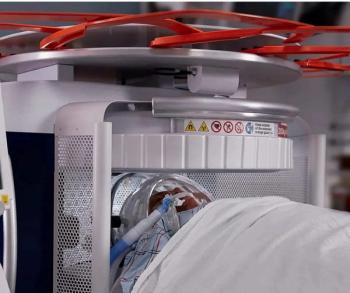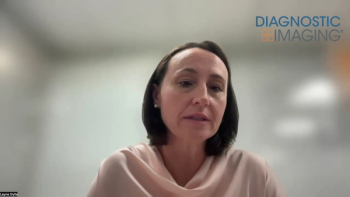
CT Coronary Angiography of Suspected Angina May Save Lives
Coronary CT imaging may help clinicians identify patients with suspected angina who may go on to have myocardial infarction.
Imaging with CT coronary angiography (CTCA) among patients with suspected angina due to coronary heart disease clarifies the diagnosis, enables targeting of interventions, and might reduce the future risk of myocardial infarction, according to a study published in
Researchers from Scotland performed a prospective, open-label, parallel-group, multicenter trial to assess the effect of CTCA on the diagnosis, management, and outcome of patients with suspected angina due to coronary heart disease (CHD).
A total of 4,146 subjects, aged 18 to 75, participated in the trial; 47% of participants had a baseline clinic diagnosis of CHD and 36% had angina due to CHD. They were randomly assigned (1:1) to standard care plus CTCA or standard care alone. The primary endpoint was certainty of the diagnosis of angina secondary to coronary heart disease at six weeks.
The findings showed that CTCA resulted in the reclassification of CHD diagnosis in 558 patients (27%) and angina due to CHD in 481 patients (23%). Planned investigations also changed in the CTCA group (15%) compared with the controls (1%). “Specifically, the use of CTCA was associated with the cancellation of 121 functional stress tests and 29 invasive coronary angiograms,” the authors wrote. “Conversely, CTCA was associated with 94 further invasive coronary angiograms. These changes were mainly the result of the exclusion or identification of obstructive coronary heart disease.”[[{"type":"media","view_mode":"media_crop","fid":"33730","attributes":{"alt":"David Newby","class":"media-image media-image-right","id":"media_crop_3680440780321","media_crop_h":"0","media_crop_image_style":"-1","media_crop_instance":"3571","media_crop_rotate":"0","media_crop_scale_h":"0","media_crop_scale_w":"0","media_crop_w":"0","media_crop_x":"0","media_crop_y":"0","style":"height: 160px; width: 120px; border-width: 0px; border-style: solid; margin: 1px; float: right;","title":"David Newby","typeof":"foaf:Image"}}]]
After 1.7 years, CTCA was also associated with a 38% reduction in fatal and non-fatal myocardial infarction, but this was not significant, the authors noted.
"Our findings are encouraging,” lead researcher Professor David Newby, University of Edinburgh Centre for Cardiovascular Science, said in a release. “However, the overall rate of heart attacks was low and we need to follow them for longer to confirm whether the technology helps to save lives in the long-term."
Newsletter
Stay at the forefront of radiology with the Diagnostic Imaging newsletter, delivering the latest news, clinical insights, and imaging advancements for today’s radiologists.




























